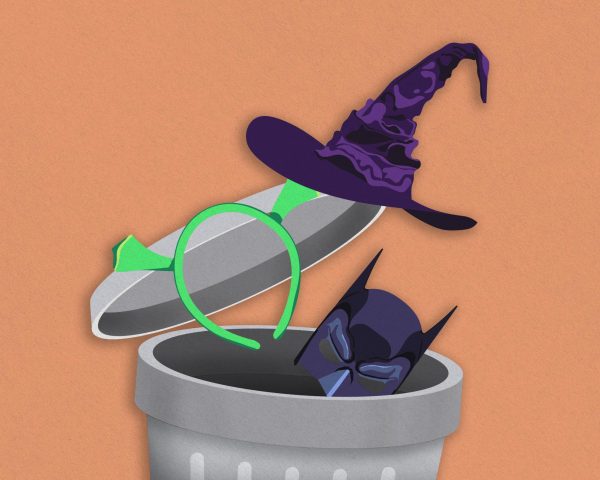Tulane University senior Kate Rubich is determined to avoid fast fashion this Halloween. As an economics and environmental studies major, Rubich is deeply concerned about the environmental impact of her clothing consumption.

“I’ve written a bunch of papers on fast fashion; it’s a very big part of my academic studies,” Rubich said. “[I see fast fashion] in my social life. I see packages every single day from random stores, and it’s like, okay, come on, this is stuff that you’re going to touch for the next seven months of college and then never again. What’s the point?”
In 2023, Americans spent a record $12.2 billion on Halloween costumes. This year, consumers are projected to spend $11.6 billion. An estimated 5.4 million kilograms of waste is produced in the U.S. by discarded costumes.
Rubich describes the shock of seeing Tulane’s fast fashion culture as a transfer student.
“When I came here junior year, I felt like an outcast,” she said. “I’m going to stand out in not a good way. I don’t have the right materials to dress for the school.”
However, Rubich’s concern for the environment led her to vow not to purchase any clothing first-hand, beginning in January 2024. Since then, she has reshaped her fashion consumption, shifting to thrift stores and resale websites to build a more sustainable wardrobe.
One of Tulane students’ favorite places to shop secondhand is Big Star Vintage & Costume Co., located in Uptown New Orleans.
Big Star Vintage & Costume Co. owner Anastasia Campeau is a strong advocate for sustainable fashion.
“Usually, [secondhand fashion is] more durable; they’re going to last you longer. They’re also made out of better fabrics so that if they need a repair, it’s easier,” Campeau said.
Tulane senior Sonya Bierbaum is also dedicated to creating sustainable Halloween costumes. Bierbaum prefers to make her own costumes.
Bierbaum believes that one reason Tulane students participate in fast fashion is because they do not plan to live in New Orleans after graduating.
“There’s really no incentive to hold onto things in the same way. And because of that, [there is] no incentive to get high-quality things. Therefore, people default to whatever’s cheapest. There’s a reason why fast fashion is so big. It’s because there’s a demand for it,” Bierbaum said.
Rubich aims to lower that demand by encouraging her friends to swap costumes, shop at thrift stores and offering her sewing machine to make minor repairs to pieces instead of throwing them away. She understands that taking on a year-long challenge might not be the best way for everyone to change their habits, but she believes that it is worth it.
“It’s hard to adopt a fully sustainable lifestyle. But I think the fast fashion thing has been very rewarding emotionally,” Rubich said. “It takes the individual. You’re influenced by your peers. The more people that adopt this lifestyle, the more it will be well implemented.”
Mark Davis, director of The Center for Environmental Law, considers the role that policy and regulation could play in reducing the harmful effects of fast fashion.
“Everybody likes easy. This is one of the reasons that you need standards. If you wonder why we have laws against child labor, why we have environmental laws — we have them because sometimes you have to set some rules that everyone is going to compete with,” he said.
Davis made note of the power the individual can have in influencing the way producers act.
“We’re in a market economy, and in some sense, your vote counts, and you vote by how you purchase.”
But the responsibility is not entirely the consumer’s to bear alone, Davis argued.
“I think it’s vitally important to make sure that we’re not putting all of the onus on those least able to do something about it,” he said. “Because almost the overwhelming bulk of pollution that we see in our world is not coming from households.”
In 2022, residential and commercial emissions accounted for only 13% of national greenhouse gas emissions. Transportation, agriculture, electric power and industry accounted for the rest.
In time for her Halloween event, Rubich compiled a unique and sustainable costume. Every item she wore was from her closet. Transforming a pair of baggy jeans and a white tank top into a full costume, she accessorized her costume with a red hat and added a homemade label to a can of spray paint to become Tricky, a character from the popular video game Subway Surfers.



